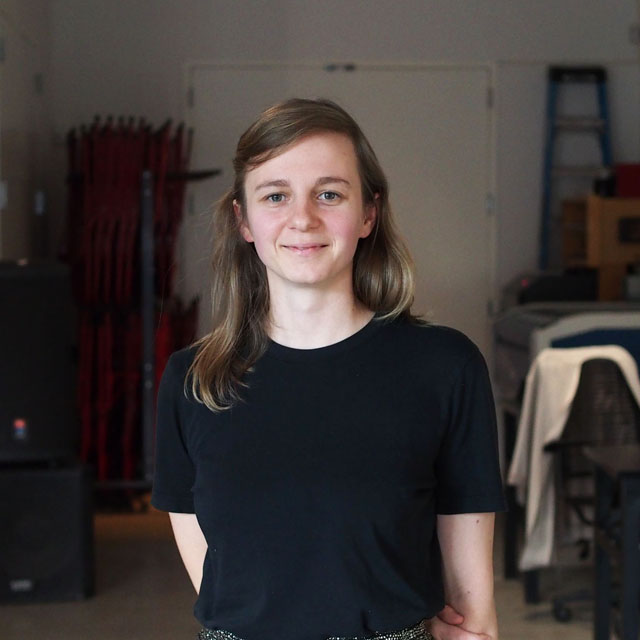Meet the Eyebeam Access (2018-2019) Residents Interview: Shannon Finnegan in conversation with open call jury member Alice Sheppard
Learn more about the Open Call: Access.
Shannon Finnegan is an artist making work about disability culture and access. Her work is often intended specifically for a disabled audience and reflects the humor, vibrance, and nuance of the community. During her residency at Eyebeam, she will focus on reframing alt-text as a poetic form. Alt-text, an important tool for web accessibility, is often written in a reluctant, perfunctory style. Through research about the best practices for writing alt-text and how those practices align or conflict with approaches to writing poetry, Finnegan will illuminate the expressive potential of alt-text for vision-impaired and non-disabled users. The project will culminate in an alt-text guide, writing workshops, and web-based art projects. She spoke with Alice Sheppard, dancer, choreographer, artistic lead and founder of Kinetic Light.
Alice Sheppard: Tell me a little bit about how the theme of ‘access’ relates to your work.
Shannon Finnegan: I think, very directly in my case. I actually have been thinking a lot about the conversation after your performance at the Whitney where Walei Sabry from the audience asked, “Whose responsibility is access?” The conversation at that event captured some of the nuance of this issue. You said you were hesitant to say it’s entirely the responsibility of the artist. That makes a lot of sense to me. I don’t want to take on access in a way that relieves an institution of their responsibility for working on access. Access is everyone’s responsibility. Access is really important for the type of work that I want to make and the audience I want to reach, so I’ve been thinking about what it means to make my work accessible and how I can be proactive about that.
AS: What can you say to your peers who don’t really understand that disability is more than a deficit of diagnosis? How do you begin that conversation?
SF: One of the ways that I think about influencing non-disabled people is by creating a vibrant and exciting disability culture. That’s potentially motivating in terms of thinking about disability more, getting interested in disability, reading more, educating themselves.
For this project I’m doing at Eyebeam, the work is focused on non-disabled people; hand-holding them through the process of access that’s not just about compliance or minimum effort. There are creative and exciting ways to approach access that can be very generative. Alt-text has been written in this very dry and perfunctory way, but we don’t have to do it like that. We can do it in interesting and intentional ways.
AS: So who is your audience and how do you reach them?
SF: My audience shifts from project to project. For this alt-text project, I am thinking about non-disabled people as my audience and using this project as a way to bring people into the fold in terms of thinking about disability, thinking about access. There is another piece of the project, which will come later on in my residency, where I’m thinking about making web-based art projects that can only be experienced using a screen reader.
AS: Excellent. Give me three bullet points for your personal success criteria. How do you know when you are reaching your goals?
SF: I have lofty goals for this project. I would love to see major arts institutions using image descriptions on social media and taking it more seriously in terms of their websites. There’s been a few examples, like MCA Chicago has taken a very rigorous approach to image description, and I think that’s great.
More About Alt-text as Poetry:
Alt Text as Poetry is a collaboration between Bojana Coklyat and Finnegan Shannon, supported by Eyebeam and the Disability Visibility Project.
Alt-text is an essential part of web accessibility. It is often overlooked or understood through the lens of compliance, as an unwelcome burden to be met with minimum effort. How can we instead approach alt text thoughtfully and creatively? This project reframes alt text as a type of poetry and creates opportunities to practice writing it.
